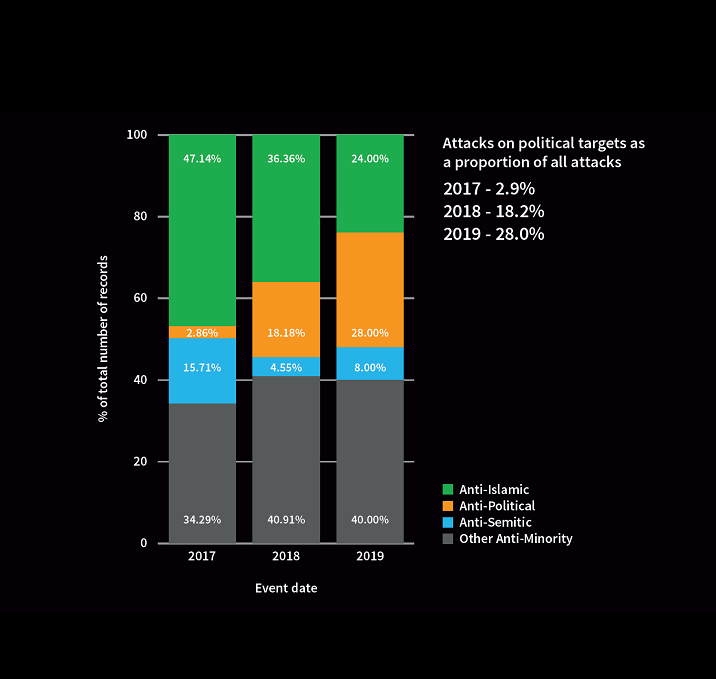العربية
日本語
- About
- Intara
- Capabilities
- Advisory
- Resources
- News
- Store
When autocomplete results are available use up and down arrows to review and enter to select.
When autocomplete results are available use up and down arrows to review and enter to select.
To what extent did political polarisation in the UK influence the focus of far-right violence between 2017 and 2019?
The Janes Terrorism & Insurgency Centre recorded a 25.1% increase on political targets as a proportion of the attacks from 2017-2019.
Activities observed were grouped in the below four categories:
- Anti-Islamic
- Anti-Semitic
- Anti-Political
- Other Anti-Minority
Interestingly, Anti-Semitic attacks decreased to 4,55% in 2018 but increased to 8% in 2019. What was the reason behind the 2018 decline in Anti-Semitic attacks? Why did they increase in 2019?
At the same time, Anti-Islamic attacks were the highest proportion of attacks happening in 2017 and they steadily declined by more than 10% every year. Is there a trend?
Other Anti-Minority attacks have increased by more than 5% from 2017 to 2019. Is this a pattern? What could be the primary cause?

Janes monitors terrorism and insurgency events across the globe on a daily basis. The addition of in-depth analysis and reporting from expert analysts enables customers to focus on the potential future threats without diverting resources from existing or imminent threats. Optimised data and tools enable analysts to visualise a vast array of data to reveal otherwise obscure trends, variances and anomalies. For more information, please visit this page.
 Case study: Far Right Violence The Janes Terrorism & Insurgency Centre recorded a 25.1% increase on political targets as a proportion of the attacks from 2017-2019. Activities observed were grouped in the below four categories; Anti-Islamic, Anti-Semitic, Anti-Political, Other Anti-Minority.
Case study: Far Right Violence The Janes Terrorism & Insurgency Centre recorded a 25.1% increase on political targets as a proportion of the attacks from 2017-2019. Activities observed were grouped in the below four categories; Anti-Islamic, Anti-Semitic, Anti-Political, Other Anti-Minority.